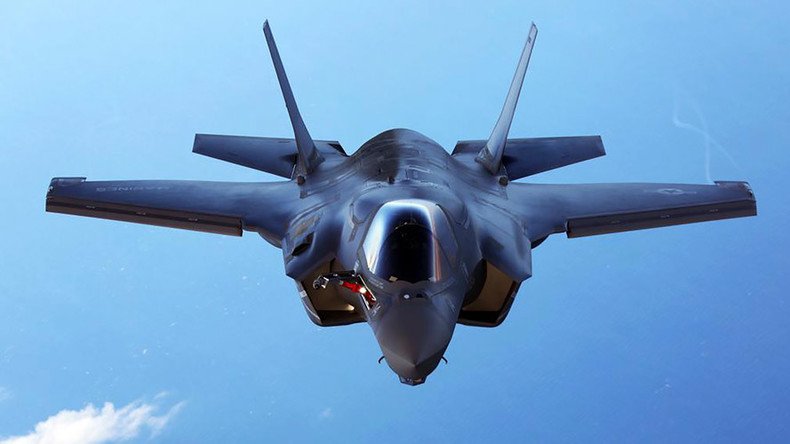The secretary of the US Air Force has approved a plan to deploy two new squadrons of F-35 fighter jets along with thousands of military personnel at Eielson Air Force Base in Alaska by 2020.
“Alaska combines a strategically important location with a world-class training environment,” US Air Force Secretary Deborah Lee James said in a statement released on Monday. “Basing the F-35s at Eielson AFB will allow the Air Force the capability of using the Joint Pacifica Alaska Range Complex (JPARC) for large force exercise using a multitude of ranges and maneuver areas in Alaska.”
The decision involved a three-year process that included an environmental impact statement that considered factors such as air quality, noise, land use and socioeconomics.
The US Air Force’s latest fighter jet, the F-35 Lightning II joint Strike Fighter, will join the F-16 squadron currently assigned to Eielson. Eielson will be the first base outside of the continental US in the Pacifica area of operations to receive the fifth-generation fighter jet.
“Integrating that fifth generation force with Navy, Marine and allied F-35 forces will provide joint and coalition war fighters unprecedented survivability, lethality and battle space awareness in contested environments,” said Air Force Chief of Staff General Mark Welsh, according to Defense News. “It’s an exciting time for Pacific airpower.”
The US plans to purchase more than 2,400 F-35 fighter jets from manufacturer Lockheed Martin over the next several decades. The jets come in three variants, the F-35A, F-35B and F-35C. Eielson is scheduled to receive the F-35A, which was built for a conventional runway. The other variations include the F-35C, built for aircraft carriers, and the F-35B “jump jet,” designed for short takeoff and vertical landing. The jets have been in the works since the 1990s, but have been delayed by numerous technical problems. The first nine were delivered in 2011, and the company is scheduled to deliver another 53 this year.
The most recent production cost for a single F-35A is $94.8 million, not including the price of the plane’s Pratt & Whitney engine.
It is not just the mounting bills estimated to cost American taxpayers over $1 trillion that have many military officials and politicians concerned. An 82-page Pentagon report released on February 4 revealed an astounding number of deficiencies in the project.
Michael Gilmore, the Pentagon’s Director of Operational Test and Evaluation, said among the F-35’s problems was its inability to deploy weapons or defensive countermeasures while flying at its maximum speed of Mach 1.6, requiring pilots to slow to Mach 1.2 or less in order to fire.
Software bugs have plagued the fighter as well, with 11 of the 12 weapons tested severely hampered. The software malfunctions, Gilmore writes, “required intervention by the developmental test control team to overcome system deficiencies and ensure a successful event (to acquire and identify the target and engage it with a weapon).”
The Alaska base’s proximity to the Joint Pacifica Alaska Range Complex (JPARC) was a contributing factor to the decision to favor the base, allowing the new plane to take advantage of 65,000 square miles of airspace ideal for large force exercises.
“This, combined with the largest airspace in the Air Force, ensures realistic combat training for the Defense Department,” James added.
The US Department of Defense estimates that the new plans for the base will bring in 2,765 airmen, civilians, military family members, and contractors, and increase enrollment at public schools by 2.8 percent. Construction costs are estimated to amount to $500 million over several years.
According to Alaska’s Daily News Miner, the base was scheduled to close as recently as 2005, and in 2012 the Pentagon considered stripping the base of its only active-duty aircraft – F-16 fighters used to play the role of enemy aircraft during training exercises in Alaska’s interior.

